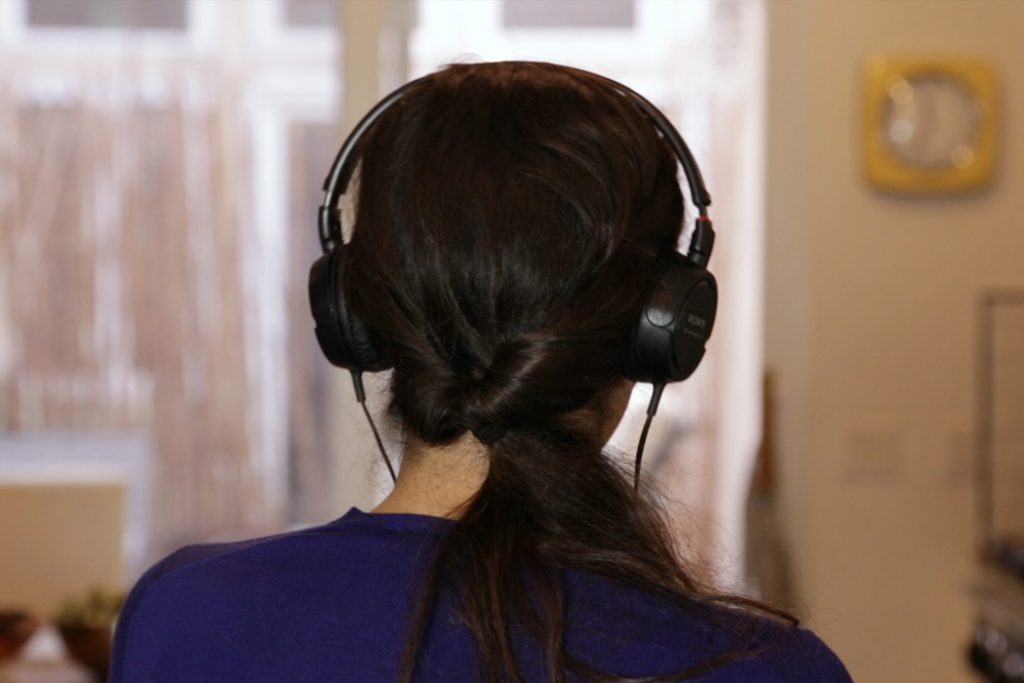+ Combine theory, improvisation, and jazzy hip-hop, and improve your piano chops with Grammy-winner Kiefer in Kiefer: Keys, Chords, & Beats.
If you’re one of the human beings on Earth born with two functional ears, you should consider yourself lucky. Not only are you a miracle of evolution and natural selection, but you get to experience the vibration of air molecules and interpret them as different sounds! According to Ancient Greek philosopher Epictetus, “we have two ears and one mouth so we can listen twice as much as we speak.”
Sound is particularly fascinating because it only exists for the split second that it happens. It is the definition of ephemeral. Yet sound in the form of music has the ability to stay with us psychologically for a lifetime. When we talk about our “ears” as musicians, we aren’t just talking about those goofy nubs on the side of your head, we’re talking about using your brain to decode sound on the fly.
Ear training comes more naturally for some than for others. When I was younger, I remember being fascinated by a kid who could hear a song on the radio and play it instantly. He made it seem so effortless. But then I started thinking about how good he was, and realizing that he must have put time into practicing and learning to be able to achieve that ability. So instead of being upset that I didn’t have as good of an ear as he did, I decided to work on it!
Over the years, I learned that what he could do was only the tip of the iceberg. I learned that there were people who could listen to a song and tell you the chords without even touching an instrument. I learned that there were people who could hear quartets and quintets and transcribe every single note that was performed by each instrument. I learned that there were people who wrote music without even touching a musical instrument — straight from thought to paper.
So I continued to study methods of ear training, and pass my discoveries on to my students. Here are a few ways to strengthen your ear. But, before we get to that, a brief aside…
We recently launched a video on our YouTube channel that teaches any musician how to memorize every common note interval using only movie themes from John Williams scores. It’s…pretty rad. Musicians, composers, and curiosity-junkies, check it out and subscribe if you like that sorta thing!
1. Sing While You Play Scales
In order to do this, I would start with a minor pentatonic scale, as those are simple and easy for your ear to digest. Start by playing the first note of the scale and then sing it to yourself. Do the same with the second, third, and so on until you’ve completed the scale (I would suggest doing at least two octaves worth). Eventually, you’ll be able to time it so that as each note is played on your instrument, you’ll sing it at the exact same time.

Once you can sing a minor pentatonic scale while you play it, try testing yourself. Start by singing a few notes, then play them back on your instrument. See if you can use your brain to come up with melodies that your fingers wouldn’t otherwise naturally be drawn to. And of course, once you’ve had enough of the minor pentatonic scale, venture into the modes of the major scale, arpeggios, harmonic and melodic minor — the more scales you can sing, the better!
2. Learn the Sound of Intervals
Intervals are what we call the space between two notes. For example, starting on an A and ending on the F# above it is a major 6th interval. Within the confines of one octave, there are 12 intervals.

Some intervals are easy to identify. An octave, for example, is the first two notes from “Somewhere over the Rainbow.” Try playing an octave and see if you can recognize that structure from the song. Other intervals have similar familiar qualities, such as the perfect 4th (“Here Comes the Bride”), minor 2nd (the “Theme from Jaws”), and major 6th (the “NBC Theme”). All intervals have an immediately identifiable character, and the more that you can familiarize yourself with each one, the better your ear will become.
This skill can be applied in many ways. Transcribing melodies by ear becomes infinitely easier when you understand that all notes have a distance that can be measured. Even transcribing chords becomes easier, since you can now identify the distance of the root movement between chords.
Once you understand intervals in this way, you might feel like Neo at the end of The Matrix, looking out into the world of music and seeing it for what it really is. I assure you, that power you feel is real. You are now the chosen one. Just try to stick to playing, writing, studying, and performing… and don’t get into any fights with Agents.
+ Learn production, composition, songwriting, theory, arranging, mixing, and more; whenever you want and wherever you are. Subscribe for full access!

3. Transcribe Songs by Ear
When I was a teenager, I still listened to the radio fairly often. Transcribing songs from the radio is one of best challenges for your ear, because:
A) There is a good chance you won’t already be familiar with the song.
B) There is only a limited amount of time before the song is over.
C) You’ll get to hear music that you wouldn’t otherwise choose for yourself.
Start by trying to discern the key of the song, and what the harmony is. Most likely there will be a form that includes a verse and chorus, or some kind of hook. Can you catch the chords as they go by? What about the melody? If you can at least identify the key, or one “home base” note, then you’ve achieved something. The more you do it, the quicker you’ll get at it. And you’ll be teaching yourself how to play on the fly, which is a great skill for jam sessions and writing or arranging with a band.
There’s no wrong way to transcribe music. You have the freedom to pick whatever you want, but remember that if you don’t challenge yourself, you won’t grow — and that applies to absolutely everything. I like the urgency of transcribing off the radio — you only have as long as the song is on to figure it out, and once it’s done, it’s done. But if it’s a playlist, streaming radio, your mom’s old 8-track player, it doesn’t really matter — just transcribe!
4. Learn to Identify Harmony
This was a challenge for me. I don’t know if there’s an easy way to start the process, other than to just keep your ears wide open at all times and see what you can recognize. I would suggest harmonizing the C major scale and starting to understand how one chord sounds when played next to another — playing I to IV to V and back again. Many songs use recycled chord progressions, for lack of a better term, which means that after a while you’ll begin to hear similarities from one song to another.

For a great example of this, and a good chuckle, watch the Axis of Awesome perform their “Four Chord Pop Song”:
They’re only using the I-V-vi-IV chords of the major scale. It is a near guarantee that at least one of your favorite songs uses those same chords. The better your ear is at identifying harmony, the easier it will be to hear how the songs you like are constructed. You’ll also hear things that don’t fit so easily into the mold, and when that occurs, do your best to apply your knowledge of theory and harmony to solve the riddle.
5. Write Without an Instrument
This is another great way to strengthen your ear. Do your best to conjure a melody and then write it down. Keep going. Write chords for it. Once you’ve finished, go to your instrument and see if what you’ve written is an accurate reflection of what you heard in your head. Remember that Beethoven, one of the worlds greatest composers, became deaf later in life and composed some of his most enduring work without ever “hearing” a single note of it.
I wouldn’t want to suggest that you should only write music this way, because there is no wrong way to compose. But the stronger the connection between your head, your heart, and your fingers, the easier you will find it to learn, enjoy, and create music. The more that you put yourself in new and slightly uncomfortable musical situations, the more you will grow and learn. Remember that when it comes to music, the journey is the destination!
Improve your music with creativity & curiosity on Soundfly.
Subscribe to our YouTube channel for weekly videos, or join Soundfly’s all-access membership to all of our artist-led online music courses, an invite to join our Discord community forum, exclusive discount perks from partner brands, access to artist Q&As and workshops, and more.




